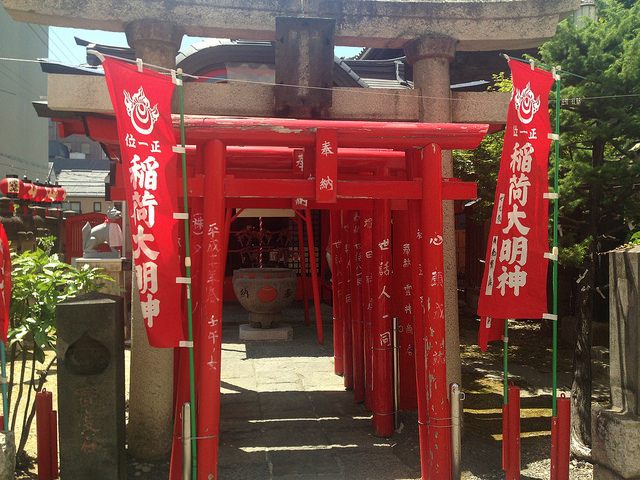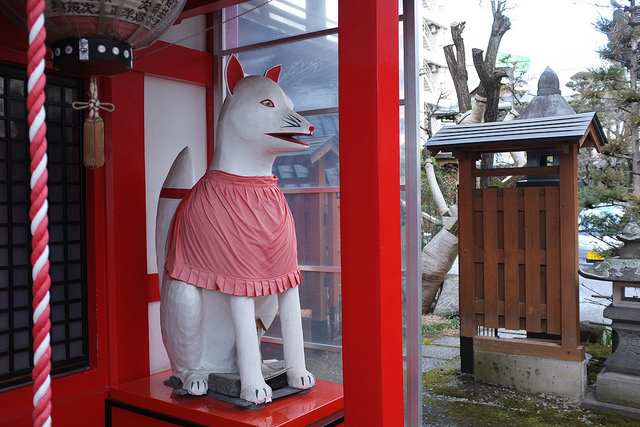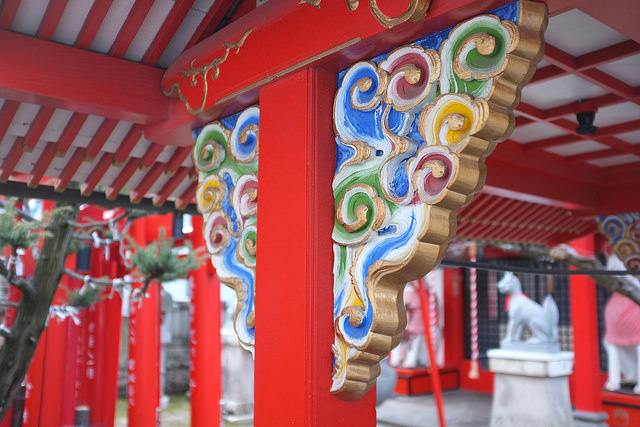
You needn’t travel far to see this enchanting little shrine. In fact, it is situated just a short distance from the iconic temari musical clock in central Matsumoto. Go down the side street and you’ll see it nestled amongst the high rise buildings. The shrine is alongside a modest temple complex (Jorinji) and is easily recognisable by its tree gate and red Shinto poles. The temple-shrine complex is notable for its wooden gate which was built in the early Edo period, somewhere between 1688 and 1704, and is the oldest gate in Matsumoto! It is supported by four supporting pillars, which have a double-beam support structure, and has an old-style roof. The eaves are made of strong dark wood and boast many beautiful carvings done by the illustrious craftsman Yutenjidainisei Yukaijoto. The gate opens inward toward the main courtyard.

Once inside, you will be surprised at how the space seems to open up. There is a beautiful garden inside which through ingenuity of design seems to defy the laws of space—Moss paths and water vistas cascading over rocks and running between trees. Allow yourself a little rest in order to enjoy the tranquility this space offers. Notable is the bell-tower which was built in 1845 in the Tachikawa style. The intricate dragon carving which appears thereon was done by the master carver Tachikawa Kazushiro, and his father-and-son apprentices Harada Kouzaburo and Harada Kozo. Also notice the three-scroll pattern which comes off the roof struts of the temple. These seem to be typical of the Matsumoto style.

The Jorinji Temple was built by Lord Ogasawara in the mid 16th century. The name later changed to Futeiji when the Ishikawa family became its patrons. It was Lord Ishikawa who built the small shrine alongside. The temple reverted to its original name with the reinstatement of the Ogasawara family as patrons. Lord Hiremasa Ogasawara donated the ten large stones which you can see inside the complex. After this time many important people have protected this temple, but unfortunately in Meiji 5 it had to be closed as the upkeep proved to be too cumbersome. In recent times it has been opened again and thus we are able to enjoy some of this natural heritage.

